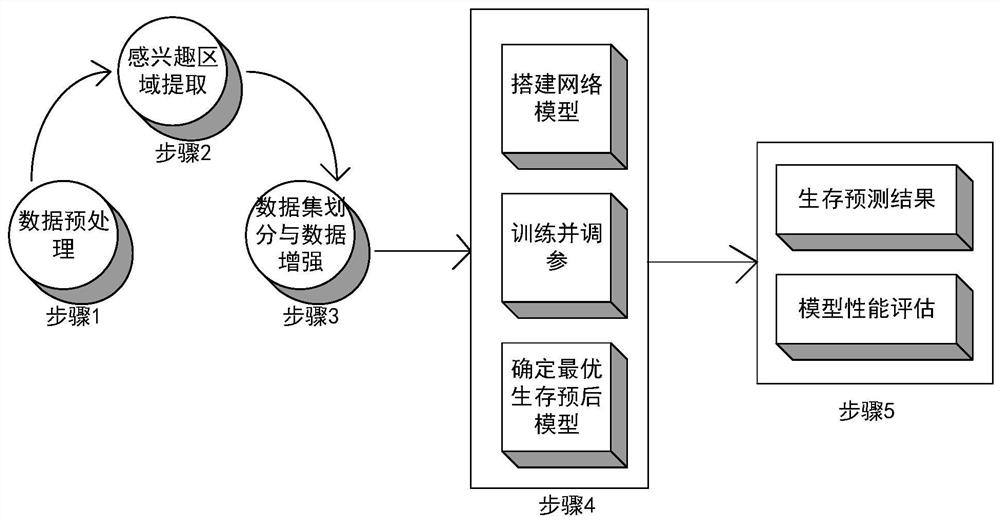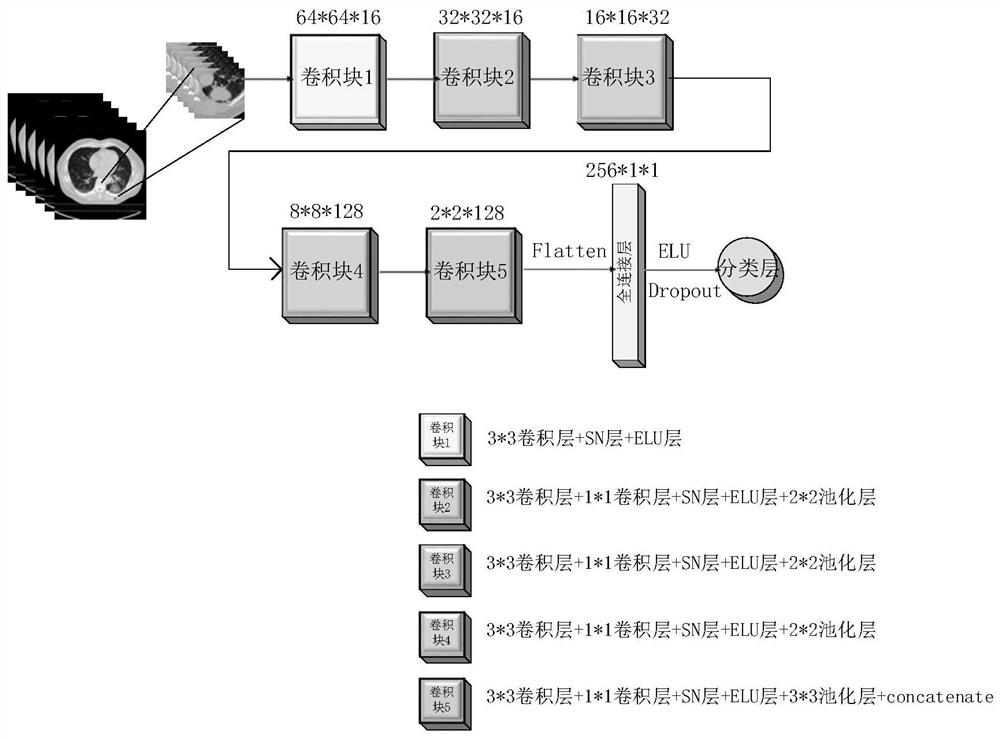Non-small cell lung cancer prognosis survival prediction method, medium and electronic equipment
A non-small cell lung cancer and survival prediction technology, applied in neural learning methods, biological neural network models, image data processing, etc., can solve problems such as time-consuming and labor-intensive, uncertain validity of hand-crafted features, and improve prediction accuracy, The effect of reducing the cost of medical treatment and improving the efficiency of prediction
- Summary
- Abstract
- Description
- Claims
- Application Information
AI Technical Summary
Problems solved by technology
Method used
Image
Examples
Embodiment 1
[0038] In-depth learning is based on the deep superposition of artificial neural network (ANN) in machine learning, which is an expansion of traditional neural networks. It realizes classification and prediction by combining low-level features to form more abstract high-level features. Due to its unique advantages, deep learning is developing faster and faster in various fields of medicine, such as the prognosis analysis of cancer. Radiomics uses automated algorithms to mine a large amount of feature information from the Area of Interest (ROI) of radiological images as the research object, and extracts effective key information through statistical methods for auxiliary diagnosis, classification or grading of diseases. Computed tomography (Computed tomography, CT) is one of the commonly used means of lung examination, and it is also one of the important modalities in radiomics. It is easy to collect and compare, and it is useful in distinguishing tumor lesions with different h...
Embodiment 2
[0060] This embodiment provides a computer-readable medium on which a computer program is stored, and when the computer program is executed by a processor, the steps of the method for predicting the prognosis and survival of non-small cell lung cancer as described in Embodiment 1 are implemented.
Embodiment 3
[0062] This embodiment provides an electronic device for predicting the prognosis and survival of non-small cell lung cancer, including a CT image acquisition module and a prediction module, wherein the CT image acquisition module is used to acquire a CT image to be predicted, and gray out the CT image to be predicted. degree normalization process, and extract the region of interest; the prediction module maintains a prognostic survival model based on deep learning, and based on the region of interest, use the trained prognostic survival model based on deep learning to predict and obtain the corresponding prognostic survival classification result. The prognostic survival model based on deep learning is a deep learning convolutional neural network model, including 5 convolutional blocks, 1 fully connected layer and 1 classification layer, abstract tumor features are extracted layer by layer, and the classification results of prognosis and survival are obtained , among the five ...
PUM
 Login to View More
Login to View More Abstract
Description
Claims
Application Information
 Login to View More
Login to View More - R&D
- Intellectual Property
- Life Sciences
- Materials
- Tech Scout
- Unparalleled Data Quality
- Higher Quality Content
- 60% Fewer Hallucinations
Browse by: Latest US Patents, China's latest patents, Technical Efficacy Thesaurus, Application Domain, Technology Topic, Popular Technical Reports.
© 2025 PatSnap. All rights reserved.Legal|Privacy policy|Modern Slavery Act Transparency Statement|Sitemap|About US| Contact US: help@patsnap.com



